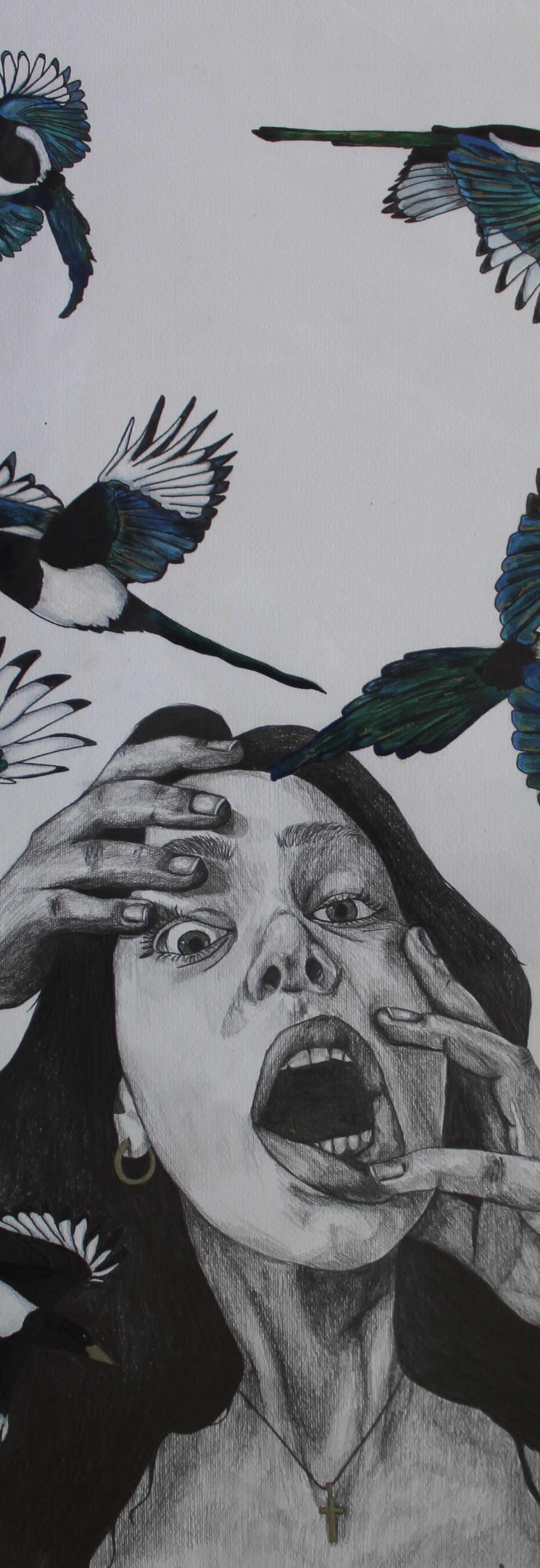
2 minute read
Emotions; allowing us to live fully
Time is the greatest enemy of mankind. Our life, the memories and growth within, as well as every emotion felt, will die with us. As life is fleeting, so is each unique and consuming emotion felt. As the poet Robert Frost once said, “Nothing Gold Can Stay.” Nevertheless, time is a crucial concept within human life, as it also provides comfort; arguably, time heals all wounds. The continued sequence of existence, filled with evolution within oneself and those around, is unbeatable and unpredictable. As human beings, change is inevitable; and such change fills individuals with a vast range of emotions. Whether they are positive or negative, emotions dictate one’s appreciation and understanding of life within a particular moment. However, emotions are simply temporary. Though one may be consumed and deeply absorbed within their own feelings, such passion is only fleeting. Unexplainable to anyone else, no one can fully comprehend the depth of another’s true feeling and thought; yet emotions are the sole factor that dictate our perception and reaction to each moment.
Everything might be different. The unestablished future is cause for hope yet discomfort. Such mystery is revealed through time, whether it resolves itself for better or worse. This exhibition uncovers the temporary dominance of emotions, and offers criticism to society’s reaction to feeling. As human beings, the desire to expose the unknown often leads to a vicious cycle lacking satisfaction. However, the hunger for positive feelings, such as satisfaction or happiness, tends to only disappoint. Acceptance and honesty are vital in order to let time heal the heat of one’s emotions. Instead of burying genuine feelings, embracing each raw emotion allows for the development of an individual overall. Nonetheless, such sensitivity comes in cruel forms like jealousy, dependence, and sabotage. Though this too is temporary, the torment within may feel permanent.
This Ephemeral Nature of Emotions highlights the depth of human nature and reaction. The variety of materials, ranging from acrylic paint, to pencil, or clay, resonates with the wide range of emotions exhibited. Despair, anger, and confusion in these works is shown through facial expressions and hand placement. Colors and their hues allow each work to reflect a certain mood. Texture also plays a role in depicting rough, aggressive concepts as opposed to smooth, soft ones. Such contrast is often seen whether it is of color, texture, or medium. Typically, the figures in this exhibition are colored gray, in order to emphasize the symbolism of other elements which are colored. Most of these works are done on a fairly large scale, relating to how imposing emotions may appear. They tend to uncover sincere yet specific feelings, while offering moments of reflection. The choice of the feelings selected, since most of them maintain a negative connotation, were specific in uncovering honesty and depth within human nature. Additionally, some works within this exhibition focus specifically on the result of time, as well as the distortion of time. In moments of despair, time may feel never ending; while what one tries to hold on to never seems to last enough. As one progresses through the exhibition, different feelings are expressed in different styles; such as abstract or digital. The final poster works gather a collection of feelings and criticize society’s reaction to them. This targets how from a young age we are conditioned to feel a certain way, and is open to interpretation for the audience. However, some of the posters maintain this honest acceptance of emotion such as stuck in memories or the reliance on others approval. As the audience explores this exhibition, each artwork should resonate with a very specific, detailed emotion that surpasses the superficial ‘sad’ and ‘happy’. Finally, one may leave this exhibition reminded of how little time is given on this Earth, and the importance of embracing each minute.










